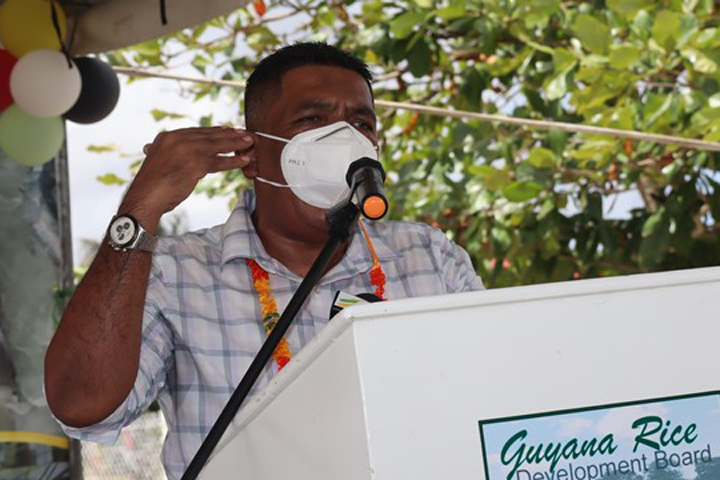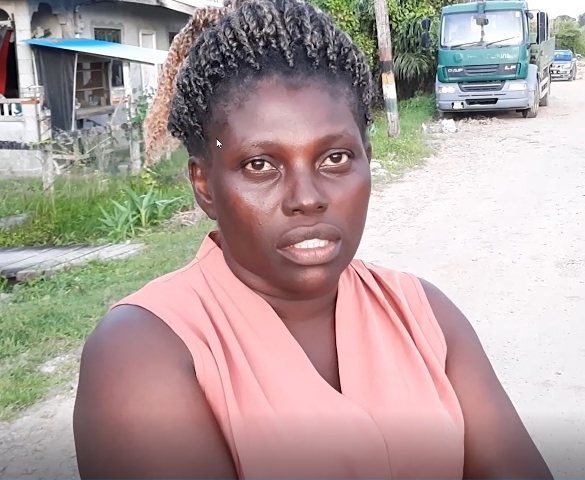as GRDB continues to promote ‘6-Points’ practice
Since taking office, the PPP/C Government through the Ministry of Agriculture has been steadfast in its efforts to improve production levels in all areas of the agriculture sector.
This is in keeping with the regional goal of reducing CARICOM’s food import bill by 25% by 2025.
Regionally, policymakers have been working to implement measures to reduce these figures significantly by encouraging sister CARICOM nations to develop their agriculture sector, more so, by planting more of the food they consume.

To this end, with rice being a major foreign exchange earner for Guyana, the Agriculture Ministry through the Guyana Rice Development Board (GRDB) has been working with rice farmers across the country, more specifically those that are considered low-yielders, to improve their production level.
Although the GRDB has, over the years, engineered and introduced new and improved varieties of rice that offer higher yields per acre, a small percentage of the country’s farmers continue to see comparatively low yields, some as low as 20 bags per acre.
While signaling the government’s goal of doubling Guyana’s current rice production levels by 2025, Agriculture Minister Zulfikar Mustapha disclosed that the ministry through the GRDB had commenced working with those low-yielding farmers to improve their production.
“Our objective is to increase production in all of the rice-producing areas. When a farmer’s yield increases, that reflects positively on the country’s production, especially with the demands that we are having now. New markets are coming on stream in the rice sector. The GRDB-16 is doing well and in some cases, we were able to move production up from 39 bags per acre to as much as 60 bags per acre. Our aim is to bring down the cost of production while increasing yields so we’ve been working with these low-yielding farmers because their production will also contribute to those levels. Yes, we’ll be opening new lands and so on but we have to work to increase the yields of our existing farmers,” Minister Mustapha said.
Minister Mustapha further stated that the GRDB was tasked with developing a database with low-yielding farmers across the country.
“This database will enable us to target these farmers so that we can work closely with them and give them the help that they need. We will help them to adapt better agricultural practices to enhance their production. Our farmers’ field schools and training exercises will also continue this year. As a matter of fact, we’ve already started working on how we will begin the rollout of these activities this year where farmers can come together and learn from each other in addition to receiving technical advice from our extension officers,”
GRDB’s Deputy General Manager, Kuldip Ragnauth while giving an update on the project, said that the implementation of the ‘6-Points’ practice to the farmers has played a significant role in improving farmers’ yields.
“Over the past season, the Board has been working with these farmers who were obtaining low yields. The reason we’re doing this is because we want to improve the yields of those farmers. After all, in the overall average of the country, those farmers who are obtaining these lower yields would bring down the overall average. But more importantly, if these farmers continue to perform in this manner, they will, at some point in time go out of cultivation. We don’t want the farmers’ cost of production to surpass that of their earnings. We want our farmers to stay in rice so we’ve been encouraging the use of what we call the ’6-Points’ practice which is also known as GRDB’s Improved Management Practices. The results from this initiative is showing farmers that as long as they can adopt these practices; once they can grow their rice scientifically using the improved varieties and having the management of it being done in the right way, this will allow these varieties to realize their real potential,” Mr. Ragnauth said.
Diane Leach-Hinds, a farmer from Sandvoort, Region Six said before working with the GRDB, her production levels were very poor.
“It was very poor but then I got to work with GRDB and they encouraged me to do the ‘6-Points’. This crop gone I was lucky to cut about 37 bags per acre. Before then I was within the 20s; 29, 28, 27; I was around there,” the farmer said.
Another farmer from Region Two said with the help and guidance of the GRDB he was able to harvest an additional 15 bags per acre during the last crop. Farmers from Regions Three and Five have also reported an increase from 25 to 40 bags per acre and 28 to 35 bags per acre respectively.
Initially, 34 farmers from Regions Two, Three, Five, and Six were identified for the first phase of the project, most of whom have since reported significantly higher yields. The Board has already commenced working with additional farmers to ensure they too benefit from improved yields.







